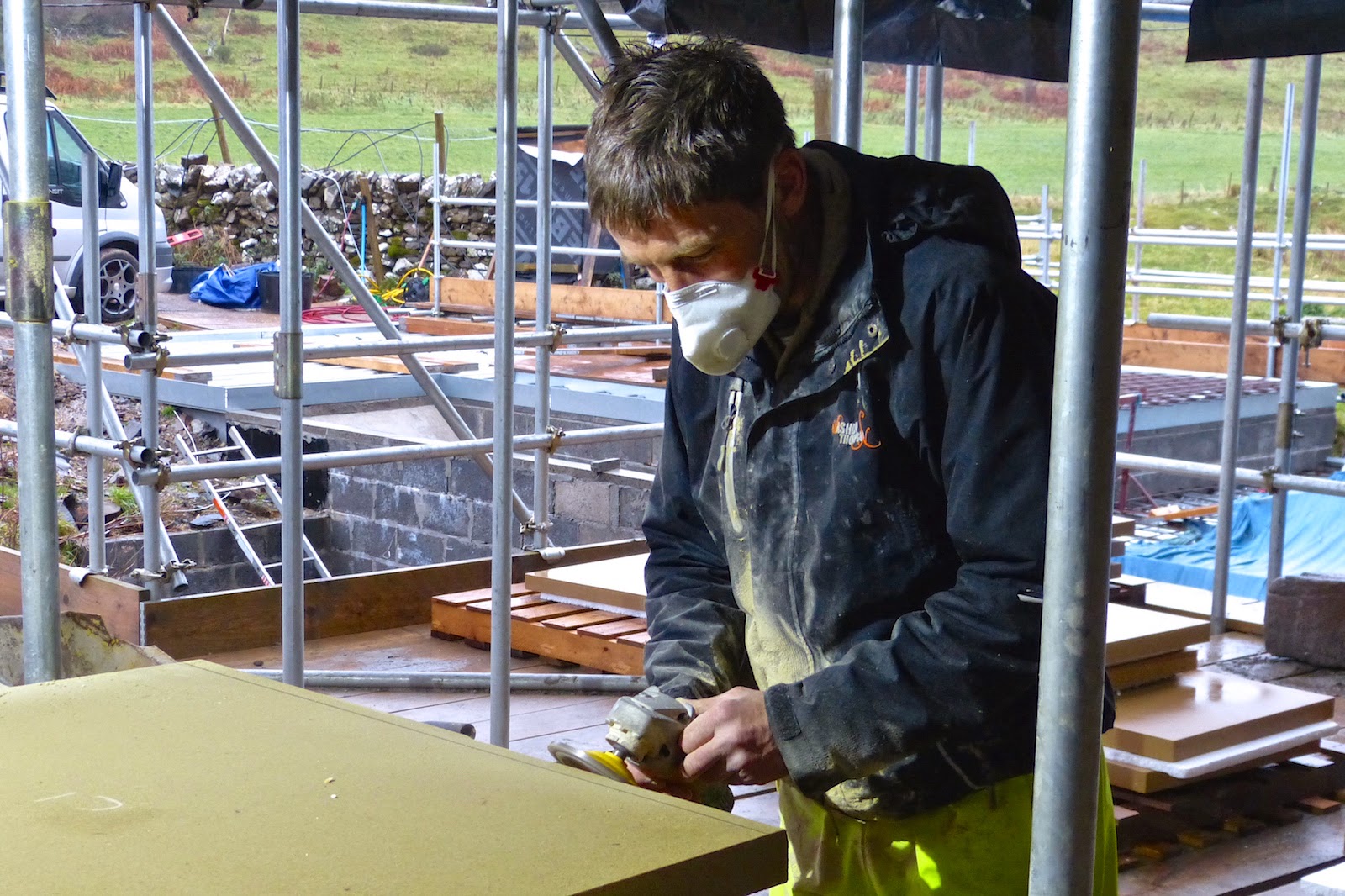A couple of weeks ago pallets of York stone slabs arrived on site to be cut for the coping stones on top of the battlement walls. They came in several standard sizes, which were then....
....cut and shaped by stonemason Damien Summerscales. To do this, he had to climb up to the battlements and make a template for each piece, since very few would conform to a standard size.
Once ready, each slab then had to be lifted up the scaffolding, by hand using a pulley, and then carried round to its position....
....where Damien had prepared a bed of mortar for it.
The slab was then lifted carefully into place.
This picture shows what may be one of the longest runs of slabs completed so far, and the way that every embrasure - that's the lower part of the crenellations - has its own, carefully shaped stone....
....however small it might be.
All this has been achieved despite the recent almost continuous rain. The last stages are to point under each slab, as has been done in this picture, and finally to point between them - but this hasn't been possible yet because of the weather.








Hello, just wondering if coping stones were originally present and have been lost, or if they are a modern intervention to improve appearance and protect against the elements?
ReplyDeleteFrancis Shaw, the architect to the Mingary Project, replies, "There were originally 16th century coping stones that were robbed. Tom Addyman, our archaeologist, thinks they were continuous, Historic Scotland is not sure. Either way, yes, there were. We have put a simplified version on. The earlier version would have been tapered off like a tooth and would have been similar to those at Kisimul. There is one crenelation on the west side that is still like this."
ReplyDelete